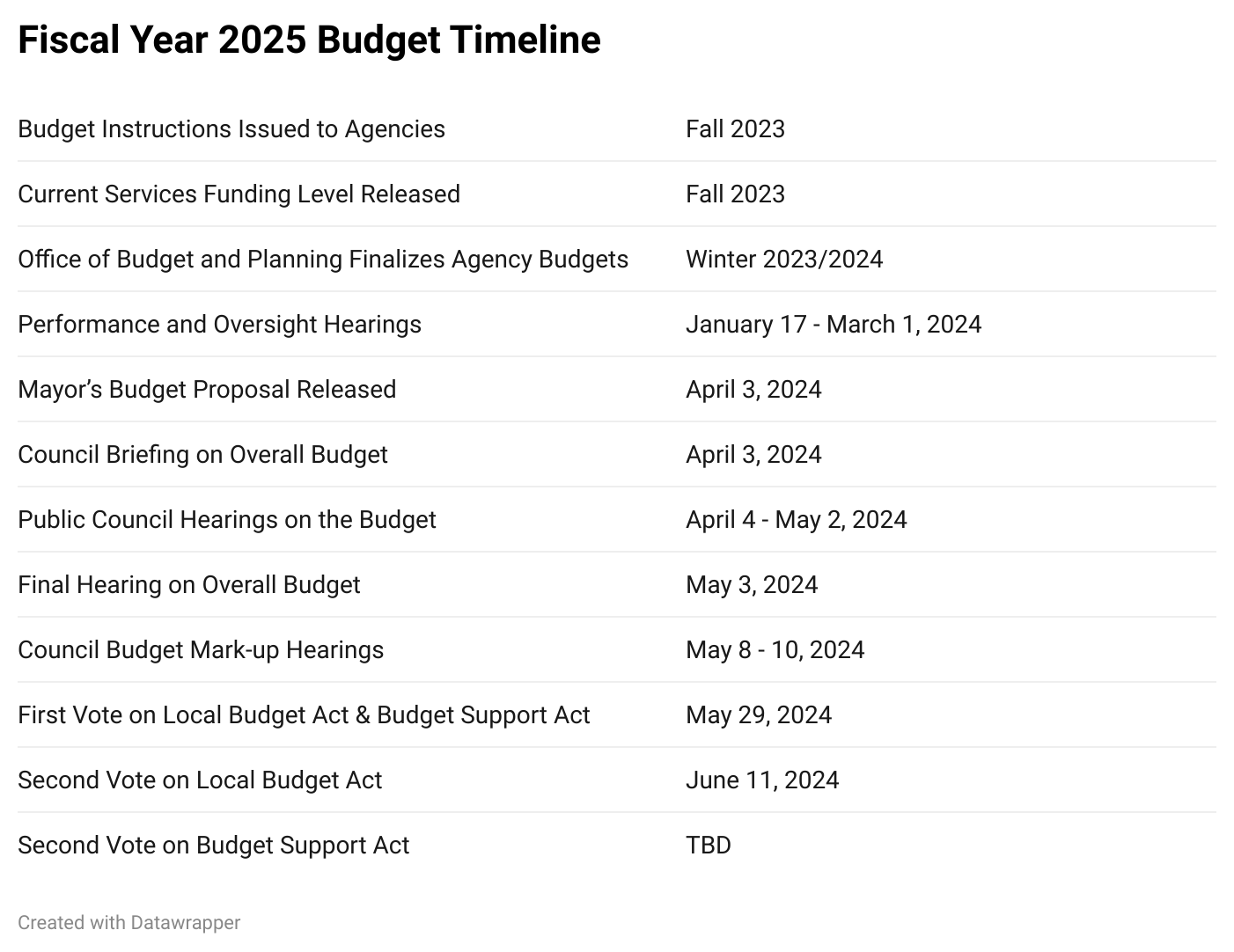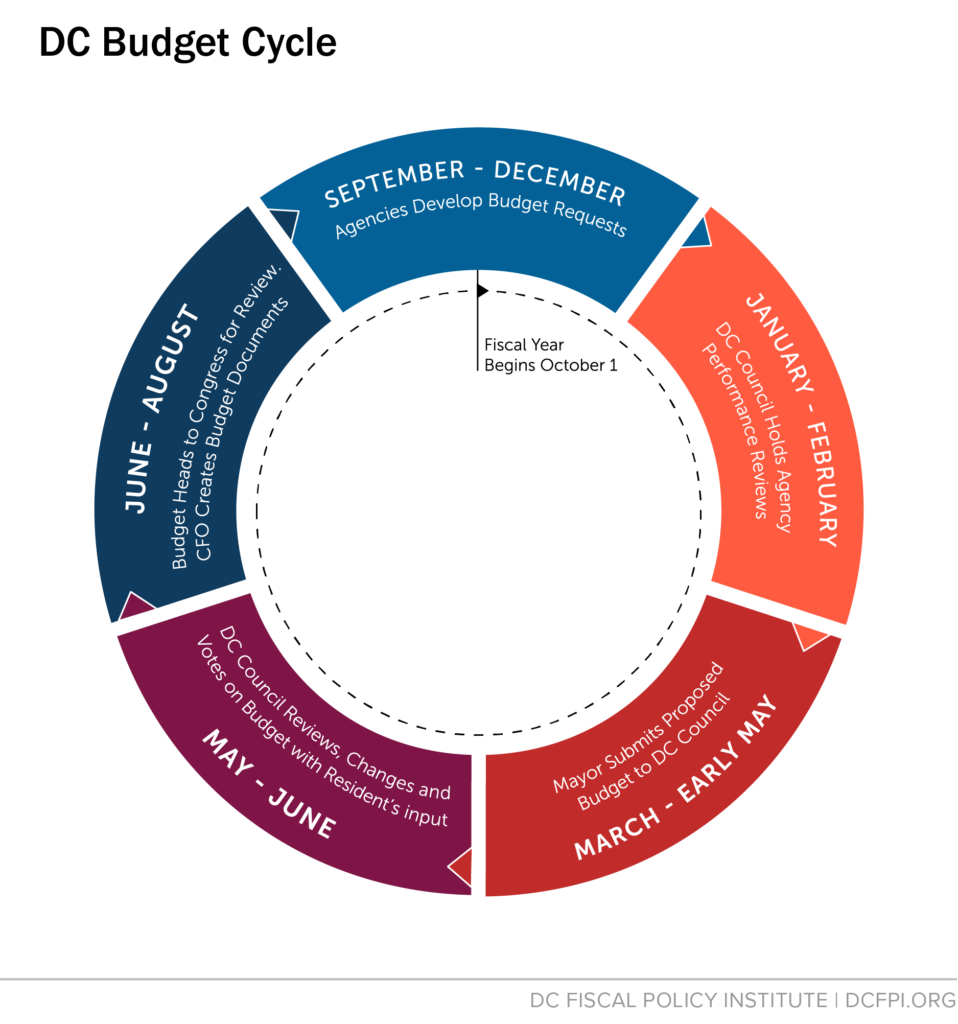Each fiscal year, the mayor and DC Council decide how to raise and allocate the District’s resources through the budget, with input from residents about what is important to them. On June 12, the DC Council cast its second and final vote on the Local Budget Act (LBA), which sets the budget for each DC government agency and program for fiscal year (FY) 2025. Read: What’s in the FY 2025 Budget? Comparing how the mayor’s proposed and Council-approved budgets meet community needs.
Despite Council’s progress toward bridging the gap between revenues and residents’ needs, the remaining holes will destabilize the tens of thousands of residents struggling to afford housing, exacerbate homelessness, and dampen the strength of the local economy. DC’s revenue, when taken as a share of the economy, is already projected to decline to its lowest levels in decades over the next four years. Read more: Vulnerable Residents Will Pay the Price for Failure to Fully Fund Housing Needs
Council reversed many of the damaging cuts proposed by Mayor Bowser, including elimination of the Pay Equity Fund, massive cuts to the “baby bonds” program, and cuts to schools and the Earned Income Tax Credit, among others. But the mayor and DC Council chose to not make use of the equitable proposals in front of them to fully fund public services. By underfunding programs that help folks afford housing, lawmakers will both exacerbate the housing crisis and undermine the benefits of antipoverty investments elsewhere in the budget.
Priorities for the Revised FY 2024 Budget and FY 2025 Budget
The District made progress towards tackling poverty in 2022 thanks to federal and local public investments in residents, underscoring that deeper, intentional investments can disrupt longstanding racial and economic inequity created over time through discriminatory policy and practice. DC leaders can’t pull back on those investments now. Read more: The DC Fiscal Policy Institute’s priorities for the revised FY 2024 budget and FY 2025 budget.
Budget Oversight Testimony
After the mayor’s budget is released, each Council committee holds budget oversight hearings on the portion of the budget the committee oversees where agency officials and the public are invited to testify. Below are the testimonies submitted by DCFPI staff to DC Council on the revised FY 2024 and FY 2025 budget:
- Council Must Choose to Equitably Raise Revenue Over Balancing the Budget on the Backs of Black and Brown Residents
- Fully Fund the Second Chance Amendment Act
- Raising Revenue Through Regressive Traffic Fines While Scaling Back Traffic Safety is Unsound and Unsafe
- DC Council Must Protect HealthCare4ChildCare
- DC Council Should Restore Funding for the Pay Equity Fund
- DC Council Should Restore Funding for the Baby Bonds Program
- Proposed Staffing Cuts Undermine Education Equity
- Public Restrooms are Fundamental to Human Dignity and Health
Budget Timeline
DC’s fiscal year begins October 1 and ends September 30. In the spring, the Mayor presents a budget to the Council, which then reviews, changes, and approves it before it is sent back to the Mayor to sign into law and submitted to the US Congress, which can choose to modify or reject it.
Resident’s Guide to the Budget
This guide breaks down the process of how DC creates its budget, including how to read budget documents and where in the process residents can influence the decisions of elected officials. Read it here.
Further Resources
Four Ways Residents Can Influence the DC Budget
How to Testify Effectively before the DC Council
DC’s Tools to Create and Preserve Affordable Housing
How DC Funds Its Public Schools
The fight for racially-just budget, tax, and policy decisions can’t happen without you. Sign up to DCFPI’s email list or follow us on Twitter, Facebook, and Instagram so we can send you regular updates on our efforts and ways you can get involved.


